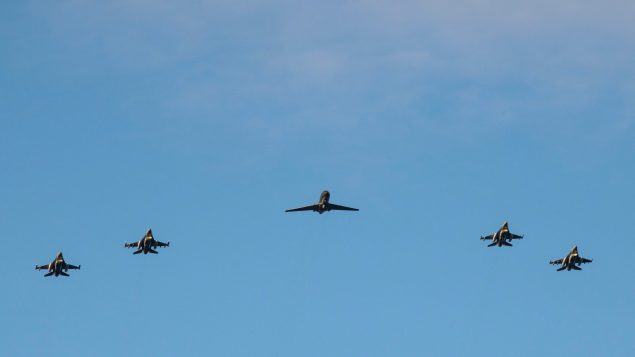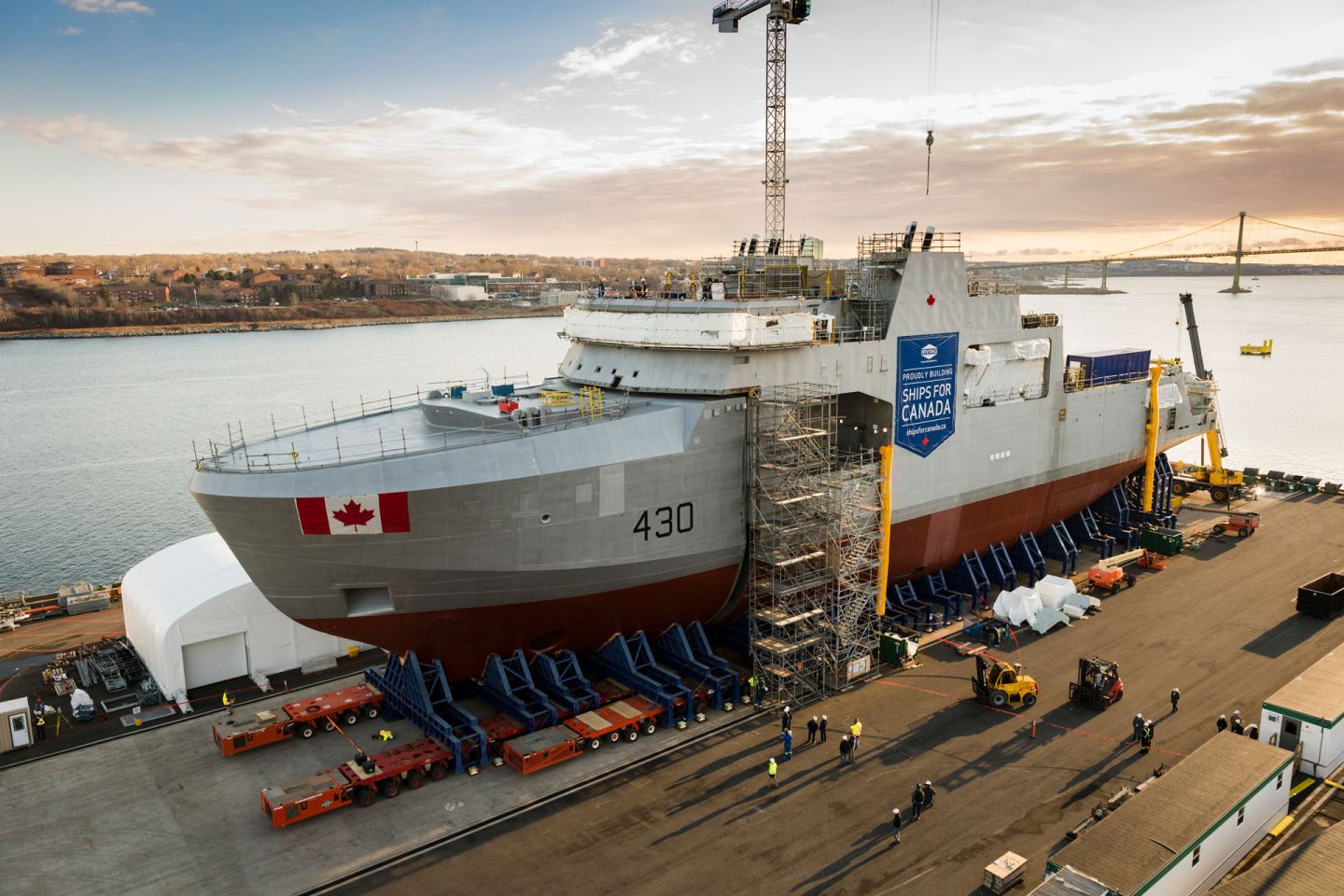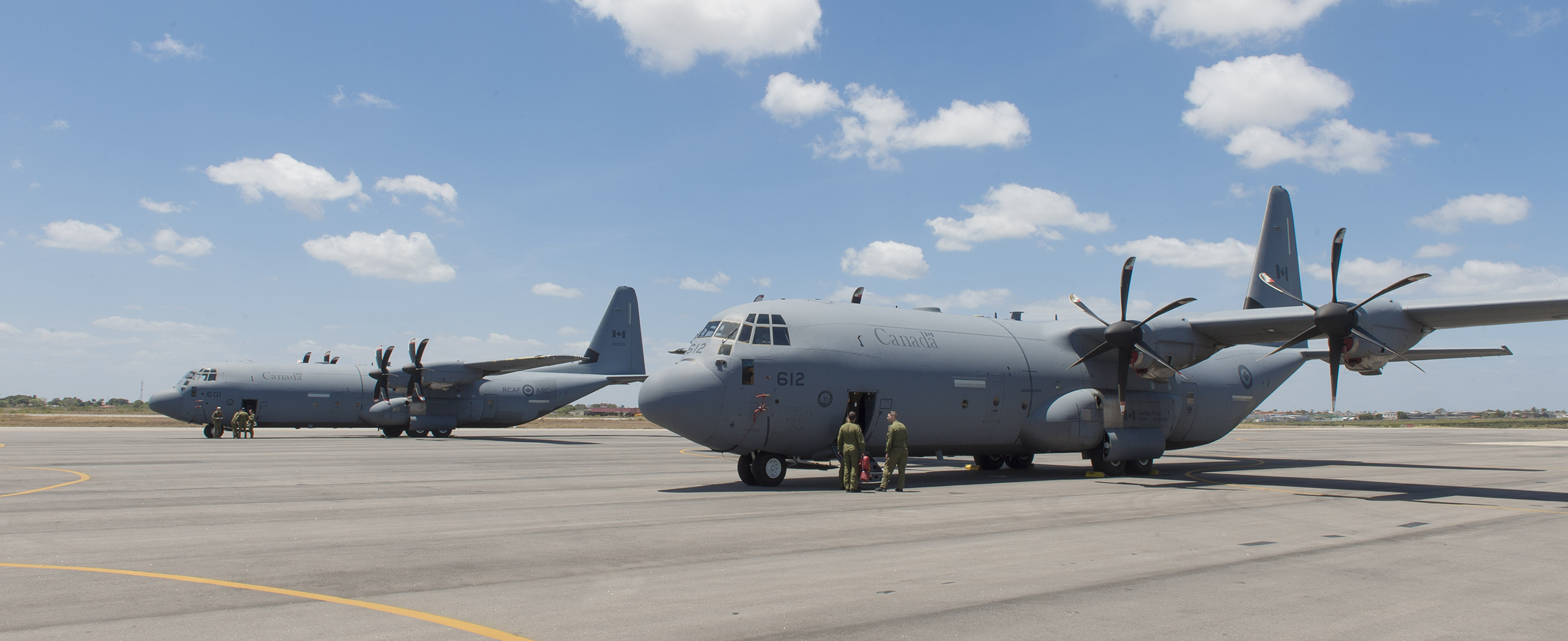Alion Canada, one of the firms involved in the $60-billion dollar procurement of Canada’s new fleet of warships, has launched a Federal Court appeal to overturn a recent decision to select Lockheed Martin as the preferred bidder.
According to an application for judicial review filed in Ottawa on Friday, Alion Canada, a Nova Scotia-based wholly owned subsidiary of the U.S. parent company, is asking the court to prohibit the federal government and Irving Shipbuilding from entering into a contract with Lockheed Martin Canada on the grounds that Lockheed’s bid was non-compliant.
Last month, Public Services and Procurement Canada announced that after a lengthy, and sensitive competition, Lockheed Martin Canada was selected as the preferred bidder to design replacements for the navy’s frigate and destroyer fleets, beating out two other bids: Alion Canada, which offered up Dutch De Zeven Provinciën Class air defence and command frigate, and Navantia/SAAB’s design based on the F-105 anti-submarine frigate design for the Spanish navy.
But now Alion is alleging that the BAE Systems Type 26 Global Combat Ship design offered by Lockheed, which is currently also being constructed for the U.K. and Australian navies, is incapable of meeting three critical and mandatory requirements of the request for proposals that the firms crafted their bids around: two requirements concern the vessels’ speed, and one deals with the number of crew berths.
 |
| An artist's rendering of the Type 26 Global Combat Ship, Lockheed Martin's proposed design for Canada's $60-billion fleet of new warships. - BAE Systems Inc. / Lockheed Martin Canada |
But now Alion is alleging that the BAE Systems Type 26 Global Combat Ship design offered by Lockheed, which is currently also being constructed for the U.K. and Australian navies, is incapable of meeting three critical and mandatory requirements of the request for proposals that the firms crafted their bids around: two requirements concern the vessels’ speed, and one deals with the number of crew berths.
“The RFP required (Public Services and Procurement Canada) and Irving to reject Lockheed’s bid because of its non-compliance,” the application reads.
Instead, the document says, the federal government and Halifax-based Irving Shipbuilding announced Lockheed as the preferred bidder and has entered into the conditions precedent period. This is the step immediately prior to awarding the definition subcontract between Irving, the prime contractor and shipbuilder, and Lockheed, the warship designer.
“(Alion) submitted a fully-compliant and conforming bid, at enormous expense, (and) expected that their bid, and the entire procurement process, would be administered in accordance with the terms and conditions in the RFP,” Alion says in the document.
“This was not the case and the applicants have been denied the fair treatment they were owed.”
As such, Alion is asking a federal court to set aside the decision to select Lockheed as the preferred bidder, and to prohibit the government from issuing the necessary approvals to award the Canadian Surface Combatant definition subcontract to Lockheed.
The respondents named in Alion’s application include Irving Shipbuilding, Lockheed Martin Canada, Navantia, SAAB Australia, and the Attorney General of Canada.
Alion’s legal actions come after months of rumblings and speculation from industry about bid-rigging: that the Type 26 was always the preferred ship of the Royal Canadian Navy, and that a number of amendments were made to the RFP to tailor it to Lockheed’s bid. These concerns centred around changes to the RFP that allowed Lockheed to offer a “paper” design that had not yet been in the water, even though Ottawa announced it was streamlining the National Shipbuilding Strategy back in 2016, axing plans for a fully Canadian designed ship and opting instead for a proven, off-the-shelf design to cut costs and mitigate risks.
The amendments, 88 in total, are referenced in Alion’s federal court application.
“While the RFP originally set out a requirement for a relatively mature and proven vessel platform, the amendments to the RFP effectively diluted the requirements and resulted in (PSPC) and Irving being able to accept an increasingly unproven vessel platform, like the one offered by Lockheed,” it reads.
David Perry, senior analyst with the Canadian Global Affairs Institute, told The Chronicle Herald he’s not surprised in the slightest that one of the other bidders is challenging the process in court.
“I mean there’s just far too much money and potential opportunity at stake for it not to be worth anyone’s while to at least try,” he said.
But, Perry said, he does find the premise of Alion’s appeal somewhat strange.
“(Alion) is basically saying that they know what (Lockheed) was able to substantiate better than either than the government/Irving did,” Perry said.
Large military procurements are a very technical and comprehensive process, and Perry said all requirements would have been laid out very clearly in the RFP. Bidders would have had to prove quite clearly to the teams evaluating the bids that they’re able to adequately meet all the requirements.
“Just to get to the point where Lockheed is right now they had to prove that they could do what Alion is saying they couldn’t,” he said.
Furthermore, Perry said it’s highly unlikely that anyone from Alion has managed to get their hands on a full copy of Lockheed’s bid. Because of the money on the line and the amount of incredibly sensitive corporate intelligence contained within a bid like this, Lockheed — one of the world’s biggest defence companies — would have guarded that information pretty closely.
“People in industry talk to each other a lot (and) have a good general idea of what others are doing, but as for if they have seen the bid, I would be astounded if that was the case.”
The Chronicle Herald reached out to Alion, Irving Shipbuilding Lockheed Martin Canada and and Public Services and Procurement Canada and all declined comment while the matter is before the courts.
Lockheed has responded to rumblings that it doesn’t meet all the RFP requirements in the past. In September, before they were announced as the preferred bidder, the Twitter account for the Lockheed/BAE team posted: “BAE System’s Type 26 meets all requirements in the CSC proposal, including speed.”
Both Irving and Public Services and Procurement Canada have expressed numerous times in response to concerns about the Canadian Surface Combatant competition that they are committed to a fair, open and transparent procurement process.










